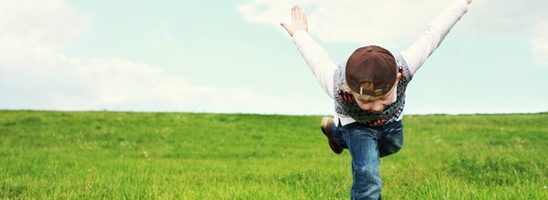Social Emotional Learning is popular! But why do school reformers discuss SEL like it has been hiding under a rock someone just kicked over? Haven’t preschool teachers always worked with children on how to get along? While reading and thinking about preschool, I thought it would be interesting to explore SEL as it relates to this age group. I’ve written about SEL before. Here. Is it preschool discipline in disguise?
For example, a recent report by Penn State and the Robert Wood Johnson Foundation, Promoting Social Emotional Learning in Preschool: Programs and Practices that Work, says SEL in preschool means children should be able to get along and cooperate with others, manage strong feelings, focus attention, and persist at challenging tasks.
They claim children are being pushed to achieve in preschool and kindergarten more difficult material at a faster rate. They acknowledge that kindergarten is the new first grade and preschool expectations are more difficult. But the report doesn’t say to dial back on this trend. Instead, they want preschoolers to learn the social-emotional skills to make it happen!
First, since this SEL is about preschool, let’s consider the average behavior of a four-year-old. Frances L. Ilg M.D. and Louise Bates Ames, Ph.D. say in The Gesell Institutes Child Behavior: From Birth to Ten that the life of a 4-year-old should be called “out of bounds.” Here are some of the characteristics of a preschooler.
- They are motor machines—kicking, throwing things, breaking stuff and running away.
- They are emotional. They are loud and silly and might laugh in-between “fits of rage.” They might say, “You make me so mad!”
- They like profanity (especially what they hear) and they giggle at bathroom and elimination words. (In other words, don’t be surprised if they call you a “poopyhead.”)
- They like rhymes. Especially silly rhymes.
- They can be defiant. They like to “swagger and boast,” and they might disregard adult commands.
- They tell tall tales (they’re more interesting) and their imagination is wild. They might really believe they have an imaginary friend.
The SEL preschool skills noted above the Ilg and Ames characteristics seem reasonable. But it’s the intensity of the demands on children that are a concern. Look beyond those simple SEL goals and one finds a different agenda.
- There’s much emphasis on improving SEL for skill building and academics. We have heard this reasoning before when it comes to the arts. Asking whether the arts will improve grades, especially for poor children, ignores the fact that children deserve exposure to the arts to thrive. The same goes for social-emotional behavior.
- Predicting whether preschool will lead to jobs in the workforce is a large part SEL. This seems premature. We should want to give children a head start in life, but solely because we love and care for them.
- Behavioral standards expected of children seem micromanaged. Data reigns supreme. While behavior checklists and observation of preschoolers may be helpful, adding more SEL formal assessment is questionable. Measuring feelings seems obscure.
- The report highlights the Perry High Scope Preschool which seems different in its approach to assisting young children to learn. Children had more control of their activities. Today’s SEL seems controlling.
- The emphasis on management and a child’s behavior is worrisome. While young children need direction, there’s no discussion in this study about the harsh “no excuses” charter schools. In fact, they highlight Tools of the Mind praised by a KIPP principal. They use it in a KIPP DC charter. It focuses on blended learning (computer)! KIPP is known for its strict discipline.
- There’s much talk about self-regulation. Is SEL preparing young children to be independent computer learners?
- The number of foundations funding SEL is large. Foundations for the most part are for school privatization. They were complicit in putting high-stakes testing in place which has shuttered public schools. Why should we trust them now?
SEL with its formal assessments and serious monitoring and measuring seems more about forcing children to work harder at controlling their emotions for the larger agenda of doing better academically.
If preschoolers are pushed to work beyond their development, aren’t they being set up for behavioral problems in the future? If they are expected to behave in ways that are beyond their development, won’t that lead to anger?
How are their developmental characteristics taken into consideration? Will some children be diagnosed as having learning disabilities when they were developing normally?
Of course, again, some control is necessary. Ilg and Ames say as much. You can’t have children running around like animals calling adults names and not learning any structure.
But shouldn’t we worry, that the concerted effort to push SEL is more about strictness? Such programs should be debated before they’re foisted on children. Which raises another question. Where has that debate been?
Reference
Ilg, Frances L. and Louis Bates Ames. The Gesell Institute’s Child Behavior: From Birth to Ten. (New York: Harper & Row, 1955) p. 30-33.
Promoting Social and Emotional Learning in Preschool: Programs and Practices that Work. Penn State and Robert Wood Johnson Foundation. May 2017.

My sense is that all the measurement and documentation is to build datasets for predictive analytics that will link children to workforce opportunities (or not). As more Pre-K programs are being financed through social impact bonds, there is an expectation of “success” documented through various measures, of which SEL is likely going to be one. There is a lot of interest in “what works” around “read by third grade” programs. I sense they want to build really robust baselines of data on pre-school students so they can use that baseline to compare “growth” up through third grade. It is all very troubling.
Excellent analysis! I agree! Thank you, Alison.